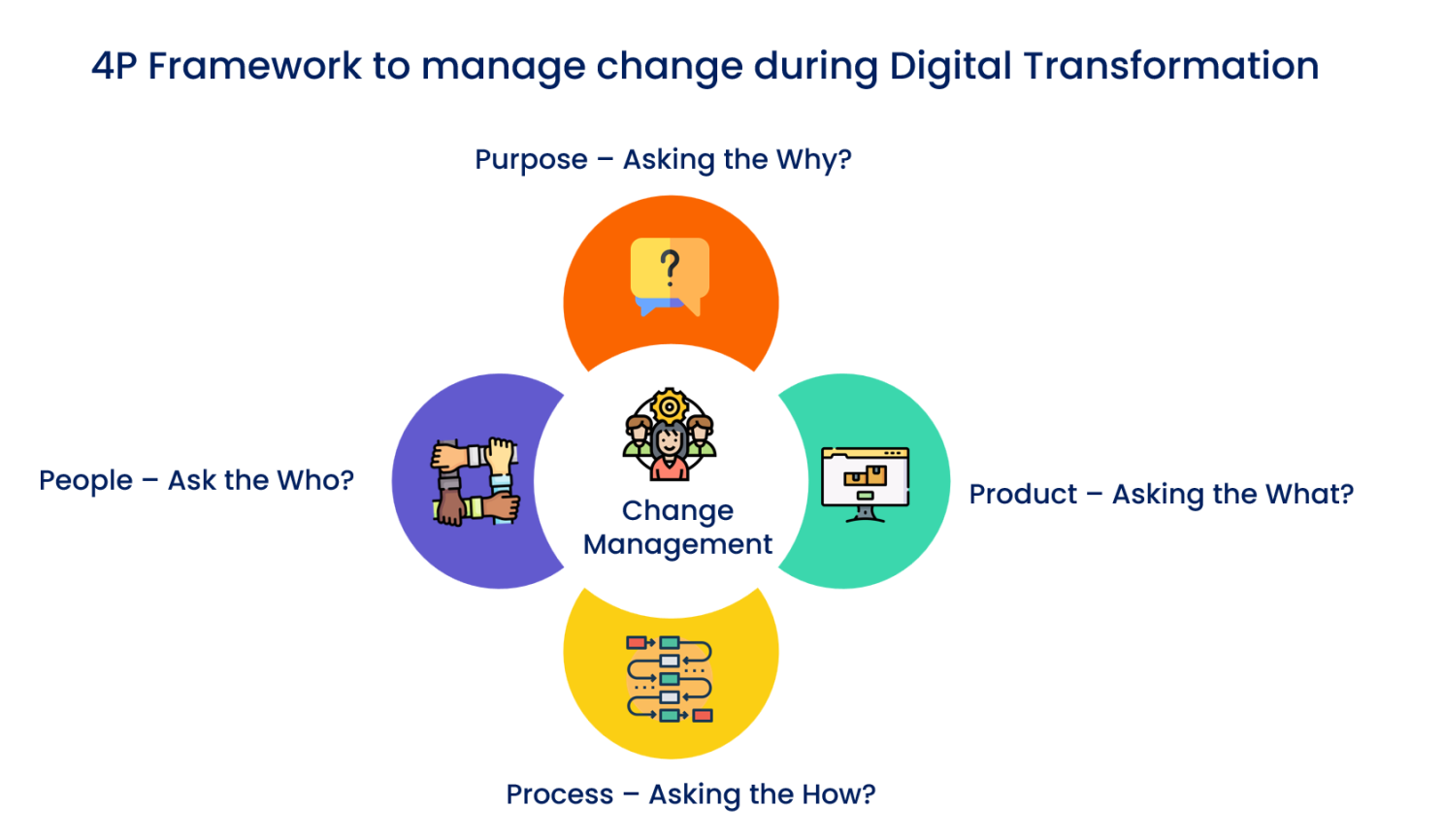We’ve all heard of change management, and we understand that at any given point in time, every organization is going through some sort of change. The world around us is in a constant state of flux and one might say that it’s not change that’s unnatural, but stagnation.
Change management is an essential element for any transformational project, digital or otherwise, and while there are many frameworks available to help organizations navigate this process that can be discovered by a simple Google search, it can still be a daunting and complex process.
Change can be in the form of transformation, transition, development, or even substitution. Change in itself is neither good nor bad and what defines it is the context, application, and implementation. Change is simply a vehicle or tool leading to a different outcome for better or worse.
In this article, I’ll be taking you through how I navigate change with my own transformation philosophy.
Managing change with the 4P Framework
So how do we manage change, especially in this digital world where we are constantly adopting newer technologies and disrupting the status quo? Following a change management process is easier said than done.
In my experience, my biggest challenge was to answer the question, “Where do I start?” While the information was available, I usually need to provide it with structure — my structure for it to make sense to me. In my attempt to do so, I created my own Transformation Philosophy based on my years of learning and success.
The 4P Framework allows me to define the situation, scope, project, and challenges with clarity and sets the foundation to create a tactical plan to manage the transformation. By providing the information structure I can then apply it to more complex models and start contributing to the overall strategy.
This also enables me to simplify the information and helps me understand the key focus areas.

Purpose
Why are we doing this? What are the outcomes that we are working towards?
This is, “Asking the why”. It’s important for me to understand what we are doing and why we are doing it. If we are introducing new technology, what were the underlying factors that made us take this decision? What functionality is the organization currently missing and what are we wanting to achieve?
Product
What is changing in the technology/tech stack? What will this change impact? How will the transition be?
This is, “Asking the what”. From a digital point of view, it’s understanding what technology will be included in our technology stack. Are we looking at a CRM, CDP, marketing automation, etc., and what software are we going to use, will it be Salesforce, Adobe, etc? Understanding the product and its scope allows us to be better prepared.
Processes
With the addition of new technology, what are the processes that need to be built around it?
This is, “Asking the how”. How will this technology integrate with the existing architecture and connect with other systems? Do we have the technical capability, is it an easy implementation, and how long will this process take? Are the roles and responsibilities of all the stakeholders involved clearly defined and who will champion it etc?
People
How will this new capability impact the existing team members or the organization?
This is, “Asking the who”. The singular most important element of any transformational project is the people who will be impacted or will be adopting this change and, unfortunately, many projects, consultants, and organizations tend to overlook this element.
The employee's understanding of the purpose and benefit of the change is crucial for its success.
Have we communicated what we are doing and why we are doing it? How will we be executing and implementing the change? Will it cause massive emotional displacement? Do we have change advocates or champions identified? How are we sharing updates and information? To what degree do we need to facilitate training and enablement?
Remember that months of strategy, planning, and implementation can fail if people do not adopt and accept the change. Resistance to change is a human reaction formed out of uncertainty, confusion fear, and frustration.
The crucial role of leadership in driving and managing change
The role of leadership is paramount when it comes to driving and managing change within an organization. Strong and effective leadership can make all the difference in the success of a transformational project. Leaders have the power to set the tone, inspire, and motivate employees, and create a culture that embraces change.
Leaders play a crucial role in guiding the organization through the complexities and challenges of change. It starts with leaders understanding the need for change and effectively communicating that need to their teams. By clearly articulating the reasons behind the change, leaders can create a sense of purpose and urgency, helping employees understand the importance of embracing the transformation and calm any potential uncertainties.
Leaders also need to lead by example. Their actions and behaviors should align with the desired changes. When employees see their leaders actively participating in and supporting the change process, it instills confidence and trust. Leaders must be visible and accessible, engaging with employees at all levels and providing guidance and support throughout the transformation journey.
Leaders need to foster a culture that embraces change as a constant and necessary part of growth, by creating an environment where employees feel safe to take risks, innovate, and adapt to new ways of working.
This can be achieved by encouraging open communication, collaboration, and continuous learning. Leaders should recognize and celebrate the efforts and achievements of employees who embrace and drive change, reinforcing the desired behaviors.
Additionally, leaders need to provide the necessary resources and support for any transformation. This includes allocating budgets, assigning teams, and ensuring that employees have the tools and training required to adapt to the new changes. Leaders should also actively seek feedback from employees and be willing to make adjustments based on their input, fostering a sense of ownership and inclusiveness.
Ultimately, effective leadership during times of change is about guiding the organization through uncertainty, providing a clear vision of the future, and inspiring employees to embrace the change journey. It requires empathy, resilience, and a genuine commitment to the well-being and success of the organization and its people.
Final thoughts
In conclusion, effective change management is a delicate balancing act that considers both the human and organizational aspects of transformation. It requires strong leadership that sets the tone, inspires, and motivates employees while creating a culture that embraces change. By understanding the importance of leadership, organizations can foster a purpose-driven approach that aligns the needs of individuals with the objectives of the organization.



 Follow us on LinkedIn
Follow us on LinkedIn



